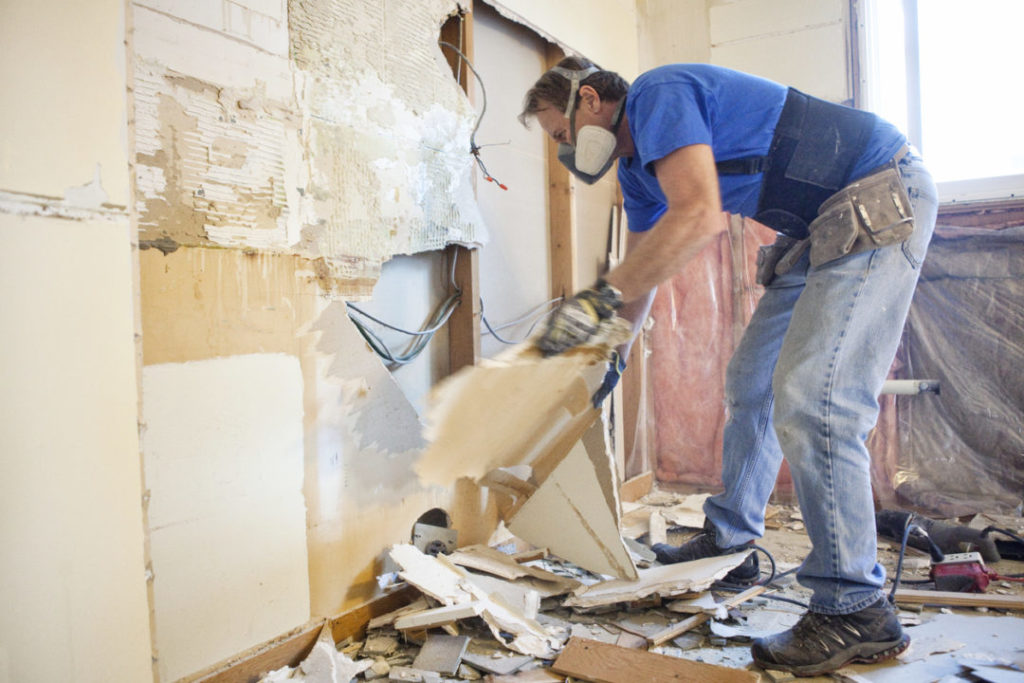
Australians love to renovate. According to the latest research from Roy Morgan, 62% of Australian home-owners did some kind of renovations in the last year, a figure that’s increased 5% over the last three years. Thanks to an endless supply of home renovation shows and online inspiration, the trend looks like it’s here to stay.
Unfortunately, as home renovations in Australia increase, so do reports of asbestos exposure. Data from SafeWork NSW shows that reports of asbestos in both residential and commercial construction sites have almost doubled in the past five years with 25,069 reports of licensed asbestos demolition work in 2016 alone. For some time experts have predicted a ‘third wave’ of asbestos-related diseases, and sadly, the increased reports of asbestos support such a theory.
The Asbestos Problem
Asbestos, a material once used widely in construction across Australia, is now recognised as a carcinogen responsible for devastating lung diseases like mesothelioma, asbestosis and lung cancer. It may take many years for the disease to develop, up to 40 years after exposure to asbestos.
Those who worked directly with asbestos in the mining and processing industry were the ‘first wave’ of asbestos related disease sufferers. Tradespeople who worked with the substance every day became the ‘second wave’. The ‘third wave’ refers to those who have presented with asbestos related disease, more recently, with no known occupational exposure to asbestos.
Home Renovations and the Third Wave
With more than four decades of widespread asbestos usage, it’s likely that houses built in the late 1940s-1980s were constructed with asbestos containing material. This material may include insulations roofing, floors, walls, electrical, plumbing, glues and fences. While these houses sit undisturbed, asbestos poses little threat to the people that live there, but with the growing popularity of home renovations, especially when undertaken by homeowners themselves, there is concern that a new generation may be exposed to the harmful effects of asbestos.
Home renovators who do not take appropriate precautions could find themselves in a growing ‘third wave’. The Asbestos Safety and Eradication Agency suggests that 42% of future mesothelioma cases will come from third wave exposures such as home renovations or environmental exposure.
Dealing with Asbestos
The Asbestos Safety and Eradication Agency advises that any house built or substantially renovated between the end of the Second World War and the late 1980s would almost certainly contain some asbestos. Typically these are the houses that are now of ‘renovation age’ and renovators should approach these properties with caution and appropriate safety measures. Precautions include asbestos testing through a qualified professional and safely removing any asbestos with a licensed asbestos removalist.
What Does the Law Say?
Asbestos was officially banned in Australia at the end of 2003. Work health and safety related to asbestos is regulated by the individual states and territories through regulators like SafeWork NSW who cover management of asbestos including licensing of asbestos assessors and removalists.
Compensation for those suffering from asbestos related diseases also varies across states and territories, but in most jurisdictions laws and special tribunals help to provide recourse for disease sufferers and their families in a timely manner. These laws and tribunals focus on those who have had occupational exposure. Those suffering asbestos related disease as a result of environmental exposure or second-hand exposure may find it harder to obtain compensation. In these cases, issues of ‘foreseeability’ and ‘causation’ can be problematic.
As the incidence of ‘third wave’ sufferers increases, we may see more legal action related to environmental and second-hand exposure to asbestos. For now, DIY home renovators should remain aware and always proceed with care.
Taylor & Scott Lawyers are committed to helping dust-disease sufferers, travelling across Australia to meet with those affected. Over the years they have acted for many sufferers and their families in a timely manner. In cases of dust-related diseases, Taylor & Scott will act for you on a no-win no-fee policy to remove the financial burden. Contact Taylor & Scott Lawyers for expert legal advice and representation.
At Taylor & Scott “We Care For You”.








